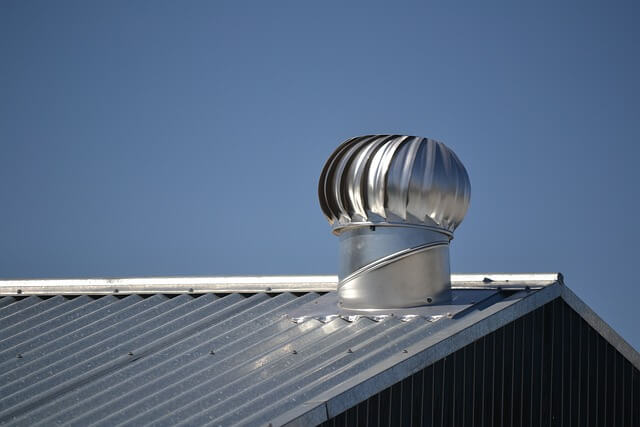Effective Ways to Prevent Mold and Mildew in Bathroom Grout
Mold and mildew are common problems in bathrooms due to the high levels of moisture and humidity. These unsightly invaders can not only detract from the appearance of your bathroom but also pose health risks. Bathroom grout is particularly vulnerable to mold and mildew growth, making it essential to take preventive measures to keep it clean and free of these harmful microorganisms.
Effective prevention of mold and mildew in bathroom grout involves a combination of regular cleaning and maintenance, proper ventilation, and the use of mold-resistant products. Regular cleaning of bathroom grout with a mixture of bleach and water can help to remove existing mold and mildew and prevent their growth. Proper ventilation, such as the use of an exhaust fan, can help to reduce the moisture levels in the bathroom and prevent the growth of mold and mildew. Additionally, using mold-resistant grout and sealants can help to prevent the growth of these microorganisms in the first place.
Understanding Mold and Mildew
Mold and mildew are types of fungi that thrive in damp, warm, and humid environments. They can grow on a variety of surfaces, including bathroom grout, walls, ceilings, and floors. Mold and mildew can cause health problems, such as respiratory issues, allergies, and infections.
Mold and mildew are often mistaken for each other, but they have some differences. Mildew is a type of mold that grows on plants, while mold grows on a variety of surfaces. Mildew is also easier to clean than mold because it only grows on the surface, while mold can grow deep into the material.
Mold and mildew can be prevented by controlling the moisture levels in the bathroom. This can be achieved by using proper ventilation, such as an exhaust fan, and wiping down surfaces after each use. Regular cleaning with a mold and mildew cleaner can also help prevent their growth.
In addition to prevention, it is important to identify and remove existing mold and mildew. This can be done by using a bleach solution or a commercial mold and mildew remover. It is important to follow the instructions carefully and wear protective gear, such as gloves and a mask, when using these products.
By understanding the basics of mold and mildew and taking preventative measures, homeowners can keep their bathrooms clean and healthy.
Daily Maintenance Habits
To prevent mold and mildew from growing in bathroom grout, it is essential to establish daily maintenance habits. These habits will help maintain a clean and dry environment, which is not conducive to mold growth. Here are some effective daily maintenance habits:
Proper Ventilation
Maintaining a healthy environment in your bathroom is not just about regular cleaning; it’s also about ensuring effective ventilation. This is particularly important when it comes to preventing the growth of mold and mildew, especially in bathroom grout. Mold and mildew thrive in moist environments, and bathrooms are often the most susceptible areas in a home due to their high humidity levels.
To combat this, it’s essential to keep the bathroom well-ventilated. Simple yet effective methods include regularly opening windows to allow fresh air to circulate. Additionally, the use of exhaust fans plays a pivotal role in removing moist air from the space. These fans should be turned on during showers or baths and kept running for a short while afterward to ensure all the humid air is expelled.
Another effective strategy is to use dehumidifiers, particularly in bathrooms without windows or in regions with high humidity levels. Dehumidifiers work by removing excess moisture from the air, thereby creating an environment that is less conducive to mold and mildew growth. This approach is especially beneficial in maintaining the integrity of bathroom grout, as it prevents the damp conditions that mold spores need to develop.
Managing humidity through proper ventilation is a key aspect of bathroom maintenance. By incorporating these strategies, you can significantly reduce the risk of mold and mildew growth, ensuring a cleaner, healthier bathroom environment. Remember, the goal is to strike a balance between effective moisture control and maintaining an energy-efficient household.
Regular Cleaning Routines
Incorporating regular cleaning routines is pivotal in maintaining a mold-free bathroom, particularly in the prevention of mold and mildew in bathroom grout. While routine surface cleaning is beneficial, deep cleaning is key in targeting grout and other hard-to-reach areas. Using natural cleaning solutions like vinegar and baking soda not only provides an eco-friendly approach but also effectively combats mold and mildew. These ingredients, commonly found in households, are excellent for breaking down grime and preventing the growth of unwanted bacteria.
When cleaning, pay special attention to grout lines, as these areas are prone to moisture accumulation. Using a stiff brush, rigorously scrub the grout to remove any build-up, and then rinse thoroughly with water. This process not only cleans but also helps to maintain the integrity and appearance of the grout. Moreover, it’s important to remember other bathroom accessories like shower curtains and bath mats. These items should be washed regularly, as they can harbor mold spores, contributing to the overall moisture level and mold risk in the bathroom.
In addition to these cleaning practices, consider using a mildew-resistant shower curtain and choosing bath mats that dry quickly and are easy to wash. By incorporating these small but effective changes into your bathroom maintenance routine, you can significantly reduce the likelihood of mold and mildew growth. Remember, consistency in cleaning is key; regular upkeep not only maintains a hygienic bathroom but also extends the lifespan of your bathroom fixtures and accessories.
Optimizing Bathroom Hygiene: The Role of Squeegees in Mold Prevention
The use of a squeegee is a simple yet highly effective method to prevent mold and mildew in bathroom grout. This tool is essential for maintaining a dry environment in your bathroom, a key factor in mold prevention. When you use a squeegee after each shower, you’re actively removing excess water from the walls, tiles, and grout. This action significantly reduces the moisture that mold and mildew need to thrive.
Employing a squeegee should be a regular part of your bathroom routine. It’s a quick and efficient way to eliminate water droplets that can linger on surfaces and contribute to the humid conditions mold loves. For best results, make sure to cover all tiled areas and pay special attention to the grout lines, where water tends to accumulate. Using a squeegee not only helps in keeping these areas dry but also maintains the aesthetic appeal of your bathroom tiles by preventing water spots and streaks.
Incorporating daily squeegee use into your bathroom maintenance habits is a proactive step towards a healthier living space. This practice, combined with effective ventilation and regular cleaning routines, forms a comprehensive strategy for preventing mold and mildew growth. These methods are not only simple to implement but also play a crucial role in sustaining a clean, dry, and hygienic bathroom environment. By adopting these habits, you are safeguarding the longevity of your bathroom surfaces and ensuring a cleaner, more pleasant space for your daily routines.
Choosing the Right Materials
When it comes to preventing mold and mildew in bathroom grout, choosing the right materials is an important factor. Here are some things to consider when selecting materials:
Grout Selection
The type of grout you choose can make a big difference in preventing mold and mildew growth. Epoxy grout, for example, is a great option as it is resistant to moisture and does not require sealing. It is also less porous than traditional cement-based grout, making it less likely to absorb water and promote mold growth.
If you do choose cement-based grout, make sure to select a grout that is specifically designed for use in wet areas, such as bathrooms. Look for grout that is labeled as “mold and mildew resistant” or “waterproof.”
Sealants and Waterproofing
Applying a sealant to your grout can help prevent moisture from seeping in and promoting mold growth. Silicone-based sealants are a good choice for bathroom grout as they are water-resistant and flexible, which allows them to expand and contract with changes in temperature and humidity.
In addition to sealants, waterproofing your bathroom can also help prevent mold and mildew growth. This can be done by applying a waterproof membrane to the walls and floors of your bathroom before tiling. A waterproof membrane acts as a barrier, preventing moisture from penetrating the walls and floors and promoting mold growth.
Overall, choosing the right materials for your bathroom grout and ensuring that they are properly installed can go a long way in preventing mold and mildew growth.
Professional Grout Treatment
In some cases, home remedies and DIY solutions may not be enough to effectively prevent mold and mildew in bathroom grout. In such situations, it may be necessary to seek professional grout treatment.
Professional grout treatment involves the use of specialized tools and cleaning agents to thoroughly clean and sanitize grout lines. This process can effectively eliminate any existing mold and mildew and prevent future growth.
When seeking professional grout treatment, it is important to choose a reputable and experienced service provider. Look for providers who use eco-friendly and non-toxic cleaning agents to ensure the safety of your family and pets.
Additionally, it is recommended to have your grout sealed after professional treatment to provide an extra layer of protection against mold and mildew growth. Sealing the grout will also make it easier to clean and maintain in the future.
Overall, professional grout treatment can be an effective solution for preventing mold and mildew in bathroom grout. It is important to choose a reputable service provider and to have the grout sealed after treatment for optimal results.

Effective Natural Remedies
Preventing mold and mildew in bathroom grout is essential for maintaining a clean and healthy environment. While there are many commercial products available, natural remedies can be just as effective and safer for both humans and the environment. Here are two effective natural remedies that can help prevent mold and mildew in bathroom grout.
Vinegar Solutions
Vinegar is an excellent natural cleaning agent that can help prevent mold and mildew growth. It is acidic and can kill most types of mold and bacteria. To use vinegar as a natural remedy, mix equal parts of vinegar and water in a spray bottle. Spray the solution onto the grout and let it sit for about 30 minutes. Then, scrub the grout with a brush or sponge and rinse with water.
For tougher stains, use undiluted vinegar. Spray the vinegar directly onto the grout and let it sit for 10-15 minutes. Then, scrub the grout with a brush or sponge and rinse with water. Vinegar can also be used in combination with baking soda for even more effective cleaning.
Baking Soda Applications
Baking soda is another natural remedy that can help prevent mold and mildew growth. It is a mild abrasive that can remove stains and odors from grout. To use baking soda as a natural remedy, mix it with water to create a paste. Apply the paste to the grout and let it sit for at least 10 minutes. Then, scrub the grout with a brush or sponge and rinse with water.
For tougher stains, mix baking soda with vinegar instead of water. The mixture will create a bubbling reaction that can help remove tough stains. Apply the mixture to the grout and let it sit for at least 10 minutes. Then, scrub the grout with a brush or sponge and rinse with water.
In conclusion, natural remedies can be just as effective as commercial products for preventing mold and mildew growth in bathroom grout. Vinegar and baking soda are two effective natural remedies that can help keep your bathroom clean and healthy.
Chemical Solutions and Cleaners
Mold and mildew can be effectively removed from bathroom grout by using chemical solutions and cleaners. However, it is important to take proper safety precautions when using these products.
Commercial Mold Removers
There are several commercial mold removers available in the market that can effectively remove mold and mildew from bathroom grout. These products usually contain bleach or other chemicals that can kill mold and prevent it from returning. Some popular commercial mold removers include Black Diamond Ultimate Grout Cleaner, Clean-eez Grout-eez Grout Cleaner, Bar Keepers Friend Soft Cleanser, SKYLAR LIFE Mold and Mildew Stain Cleaner, and FOLLOWIN Mold and Mildew Cleaner.
Before using any commercial mold remover, it is important to read the instructions carefully and follow them closely. It is also recommended to wear gloves and eye protection while using these products to avoid skin and eye irritation.
Safety Precautions with Chemicals
When using chemical solutions and cleaners to remove mold and mildew from bathroom grout, it is important to take proper safety precautions. Here are some tips to keep in mind:
- Always read and follow the instructions on the product label.
- Wear gloves and eye protection to avoid skin and eye irritation.
- Use the product in a well-ventilated area to avoid inhaling fumes.
- Never mix different cleaning products together as this can create toxic fumes.
- Keep the product out of reach of children and pets.
- Rinse the area thoroughly with water after using the product to remove any residue.
By following these safety precautions, you can effectively remove mold and mildew from bathroom grout without putting yourself or others at risk.
Controlling Bathroom Humidity
Mold and mildew thrive in humid environments, making it essential to control the humidity levels in your bathroom. Here are some effective ways to reduce humidity and prevent mold and mildew growth in your bathroom grout.
Exhaust Fans
Installing an exhaust fan in your bathroom can help reduce humidity levels by removing excess moisture from the air. Turn on the exhaust fan during and after a shower or bath to remove steam and moisture from the air. This will help prevent mold and mildew growth on your bathroom grout. If you don’t have an exhaust fan, consider installing one or opening a window to improve ventilation and air circulation.
Dehumidifiers
If you live in a humid climate or your bathroom doesn’t have proper ventilation, consider using a dehumidifier to reduce humidity levels. A dehumidifier will remove excess moisture from the air, preventing mold and mildew growth on your bathroom grout. Be sure to empty the water reservoir regularly to prevent mold growth inside the machine.
By controlling bathroom humidity, you can effectively prevent mold and mildew growth on your bathroom grout. Use exhaust fans and dehumidifiers to reduce humidity levels and improve ventilation and air circulation in your bathroom.
Repair and Replacement Strategies
Grout Reapplication
If the grout in your bathroom is old and worn out, it may be time to reapply it. This will not only freshen up the appearance of your bathroom but also prevent mold and mildew from growing in the crevices. To reapply grout, follow these steps:
- Remove the old grout using a grout saw or rotary tool.
- Clean the area thoroughly with a mixture of water and vinegar.
- Allow the area to dry completely.
- Apply new grout using a rubber float, making sure to press it firmly into the crevices.
- Wipe off any excess grout with a damp sponge.
- Allow the grout to dry completely.
Reapplying grout is a simple and effective way to prevent mold and mildew from growing in your bathroom. It is recommended to reapply grout every few years to ensure the best results.
Tile Regrouting
If the tiles in your bathroom are old and damaged, it may be necessary to regrout them. This will not only improve the appearance of your bathroom but also prevent mold and mildew from growing in the crevices. To regrout tiles, follow these steps:
- Remove the old grout using a grout saw or rotary tool.
- Clean the area thoroughly with a mixture of water and vinegar.
- Allow the area to dry completely.
- Apply new grout using a rubber float, making sure to press it firmly into the crevices.
- Wipe off any excess grout with a damp sponge.
- Allow the grout to dry completely.
Regrouting tiles is a more extensive process than reapplying grout, but it can be necessary if the tiles are damaged or if the grout is severely discolored. It is recommended to hire a professional to regrout tiles to ensure the best results.
Preventive Measures During Construction
When it comes to preventing mold and mildew growth in your bathroom grout, taking preventive measures during the construction phase can be very beneficial. Here are some design considerations and material choices that can help prevent mold and mildew growth in your bathroom grout:
Design Considerations
- Proper ventilation: Ensuring proper ventilation in your bathroom is crucial to prevent mold and mildew growth. Make sure your bathroom has an exhaust fan that vents to the outside, and consider adding a window if possible.
- Sloping shower floors: Designing your shower floors with a slight slope towards the drain can help prevent standing water, which can lead to mold and mildew growth.
- Waterproofing: Waterproofing your bathroom walls and floors can help prevent moisture from penetrating the grout and causing mold and mildew growth.
Material Choices
- Porcelain or ceramic tiles: Porcelain or ceramic tiles are non-porous and resistant to moisture, making them a good choice for bathroom walls and floors.
- Epoxy grout: Epoxy grout is a waterproof grout that is resistant to mold and mildew growth. It is a good choice for use in showers and other high-moisture areas.
- Cement board: Cement board is a moisture-resistant building material that can be used as a backing for bathroom walls and floors. It is more resistant to mold and mildew growth than traditional drywall.
By taking these preventive measures during the construction phase, you can help prevent mold and mildew growth in your bathroom grout.
Long-Term Maintenance Plans
Preventing mold and mildew in bathroom grout requires consistent cleaning and maintenance. Here are some long-term maintenance plans to keep your bathroom grout mold and mildew-free:
- Regular Cleaning: Regular cleaning is essential to prevent mold and mildew growth in bathroom grout. Use a mildew-resistant cleaner to clean the grout and tiles at least once a week. You can also use a mixture of baking soda and water to scrub the grout clean.
- Sealing the Grout: Grout is porous and can trap moisture, making it an ideal breeding ground for mold and mildew. Sealing the grout with a grout sealer can help prevent moisture from seeping into the grout and causing mold and mildew growth. Reapply the sealer once a year to maintain its effectiveness.
- Proper Ventilation: Proper ventilation is crucial to prevent mold and mildew growth in the bathroom. Use a bathroom fan to remove excess moisture from the air after showering or bathing. Keep the bathroom door open to allow air to circulate and prevent moisture buildup.
- Drying Wet Surfaces: Wet surfaces can promote mold and mildew growth. After showering or bathing, wipe down the tiles and grout with a towel to remove excess moisture. Hang towels and bath mats to dry, and avoid leaving wet items on the bathroom floor.
By following these long-term maintenance plans, you can prevent mold and mildew growth in your bathroom grout and keep your bathroom clean and healthy.
Frequently Asked Questions
How can I incorporate a grout additive to enhance mold resistance?
Grout additives can be mixed with regular grout to enhance its mold resistance. These additives contain antimicrobial agents that prevent the growth of mold and mildew. When mixed with grout, they form a barrier that inhibits mold growth. It is essential to follow the manufacturer’s instructions when using grout additives to ensure optimal effectiveness.
What are the most effective sprays to use in the shower for mold prevention?
There are several sprays available in the market that are specifically designed to prevent mold growth in showers. These sprays contain antimicrobial agents that kill mold spores and prevent their growth. Some of the most effective sprays include vinegar, hydrogen peroxide, and tea tree oil. These natural sprays are safe to use and do not contain harmful chemicals.
Is sealing bathroom grout an effective measure against mold formation?
Sealing bathroom grout can be an effective measure against mold formation. Sealing the grout prevents moisture from penetrating the grout and creating a breeding ground for mold and mildew. However, sealing alone is not sufficient to prevent mold growth. Regular cleaning and maintenance are also necessary to keep the bathroom mold-free.
What are the characteristics of mold-resistant grout for bathrooms?
Mold-resistant grout for bathrooms is specially designed to inhibit the growth of mold and mildew. It contains antimicrobial agents that prevent mold spores from taking root in the grout. Additionally, mold-resistant grout is made from materials that are less porous than regular grout, making it more resistant to moisture penetration.
What natural methods are recommended for removing mold from shower grout?
Several natural methods can be used to remove mold from shower grout. These include vinegar, baking soda, hydrogen peroxide, and tea tree oil. These natural solutions are effective in killing mold spores and preventing their growth. It is essential to follow the manufacturer’s instructions when using these solutions to ensure optimal effectiveness.
How dangerous is black mold found in bathroom grout and how can it be addressed?
Black mold found in bathroom grout can be dangerous as it can cause respiratory problems and other health issues. It is essential to address black mold as soon as possible to prevent its spread. The best way to address black mold is to hire a professional mold remediation company. They have the expertise and equipment to safely remove black mold and prevent its recurrence.





